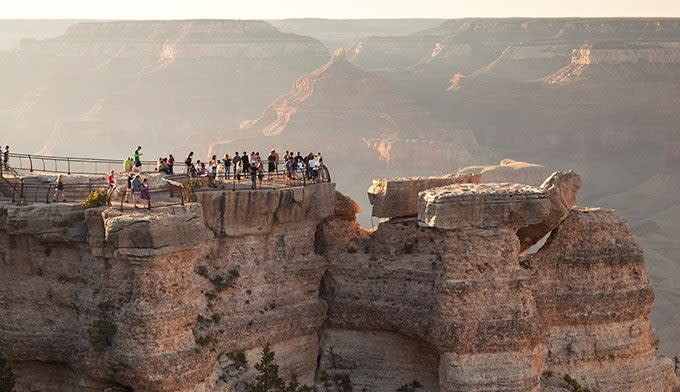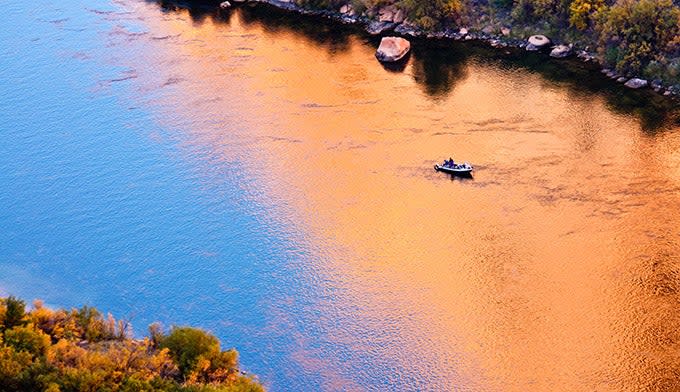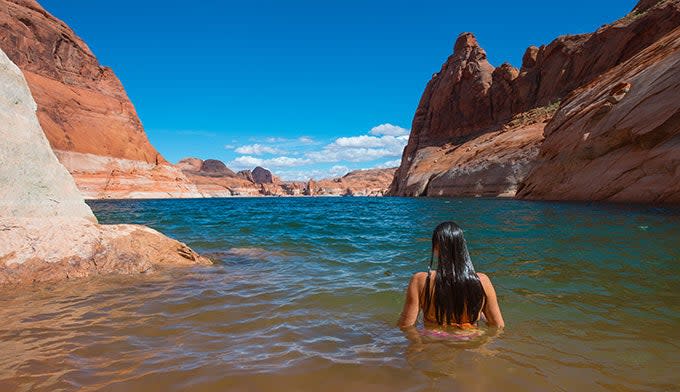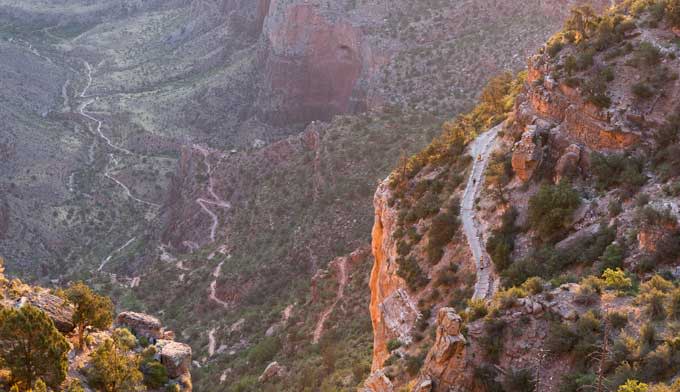Bad Selfies: 3 Places Not to Pose in the Grand Canyon
This article originally appeared on My Grand Canyon
When visiting Grand Canyon National Park, there are fantastic places to take photos and ones that are actually really dangerous. Here are three of the worst places to be caught off-balance when trying to get the perfect Grand Canyon shot.
1. Don’t pose along the fenceless areas of the rim

It’s tempting to walk right up to the edge of the Grand Canyon for an incredible view down into the canyon’s depths. But when walking near the rim tourists should be cautious with their footing on unstable ground while taking photos. Most of the park does not have protective railing. This means that you’ll want to keep children close as they may not expect a drop off as they are running around at a lookout point.
"There are a couple of viewpoints (that have fences), but for the most part here in the park there are no railings," says Emily Davis of Grand Canyon National Park's public affairs department.
In July 3, 2020, Maria A. Salgado Lopez, 59, of Scottsdale, Ariz., was hiking off trail at Mather Point when she tragically fell off the edge while taking photos with her family.
After posting an Instagram photo hours before her death, Yelp employee Colleen Burns fell 400 feet from a popular hiking spot known as Ooh Aah Point in 2016. An onlooker and friend of Burns said that Burns was attempting to move out of the way for another hiker only to trip "up on her own feet and fall backwards."
The park is not a playground and can prove deadly.
Better Idea:
Be very aware of where you are and who is around you when you are taking photos. And you can take equally beautiful selfies at fenced overlooks such as Mather Point.
2. Don’t get in the Colorado River to take a photo

Home to some of the best white water rafting in the United States, the Colorado River is a major attraction for adrenaline seeking rafters. It is also a dangerous place to be caught off guard in the fast-flowing water. Be aware that even seemingly small streams near the Colorado River can sweep you away if the current is strong.
"The river is incredibly rapid and is known for its white water rafting, so it is not a swimming destination," Davis says.
In April 2017, LouAnn Merrell and grandson, Jackson Standefer, age 14, were swept away when they slipped and fell into Tapeats Creek during a family hike. Merrell was the wife of the famous boot maker, Randy Merrell, founder of Merrell Boots. Merrell's body was not discovered, but the body of Standefer was found almost two weeks after the two went missing.
The water is extremely cold as well as fast. Drownings do contribute to the annual average of 12 deaths a year at the Grand Canyon. The Colorado River that pulses through the canyon is no place to get a shot of you flipping into the water, navigating strong currents in side streams or distracting yourself from paddling intense whitewater.
Better Idea:

Take photos from inside your raft or boat while on the river, or safely from the banks. Another option is to take a photo while swimming in Lake Powell or Lake Mead at the ends of the Grand Canyon.
3. Don’t recklessly wander down a canyon trail unprepared

The Grand Canyon is a beautiful but wild landscape that requires a certain respect in order for visitors to stay safe. Getting a selfie in the canyon makes for a good photo, but you must understand the risks of hiking below the rim. Visitors must do the proper research before attempting hikes down into the Grand Canyon where temperatures get hotter the lower you hike into the canyon.
At the South Rim, the temperature during peak summer months holds at an average of 80 degrees with temperatures reaching over 100 lower in the canyon. Packing water, a sunhat, sunscreen and food is necessary, as is starting early in the morning. The high elevation mixed with heat can quickly diminish the energy of even the toughest hikers.
"Anybody who is planning on hiking should do research and should understand their limits, as well as what it takes to hike at 7,000 or 8,000 feet in elevation in a semi-arid environment," says Davis. "Because we are on a plateau, we are actually at a mountain elevation so it looks relatively flat. It is deceiving. People don't realize that they are at that high of an elevation. Be prepared for that."
Heat stroke is a very real and considerable threat at Grand Canyon and has killed many within the park. There are numerous warning signs in the park about heat stroke. Dehydration also is a killer when hiking in the park so make sure to pack extra water.
In 2010, Gavin Smith went hiking with friends but decided to rest half way to the destination into the canyon. His friends found his body later that day 100 yards from the nearest parking lot. Smith had died from heat complications while only resting.
"There are rangers around, but we can't always respond to everyone for everything or necessarily get there as quickly as someone might need," says Davis. "It is important that if you are not feeling so good to find a spot in the shade, put your feet up for a couple minutes, have some water and a snack."
Don't stand out in the sun too long taking photos or trying to hike to a spot where a photo might be good. Heat exhaustion can happen to even the most experienced of hikers and can lead to serious medical situations.
Better Idea:
If you want to get a photo down in the canyon, bring plenty of water and a wide brim hat. Before you start your hike, tell someone where you are going and research if there are any water refilling stations on the trail.
Overall, use common sense
Before risking it all for the perfect selfie or over-the-edge photo shoot, think twice about what it might mean in terms for your safety. There is always another picture at another time within the park. Davis gives some commentary on photography in the park.
"I always say that the best shot is if someone else can take it for you," says Davis. "With so many visitors around there is always someone to help you get that perfect shot at Grand Canyon. Also, in the morning and evening the lighting is best, and believe it or not a cloudy day will make the colors in the canyon that much better," says Davis.
For exclusive access to all of our fitness, gear, adventure, and travel stories, plus discounts on trips, events, and gear, sign up for Outside+ today.

